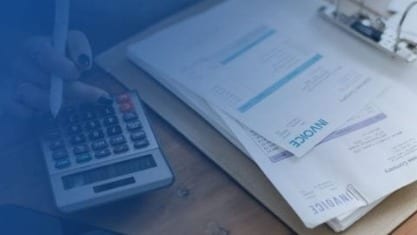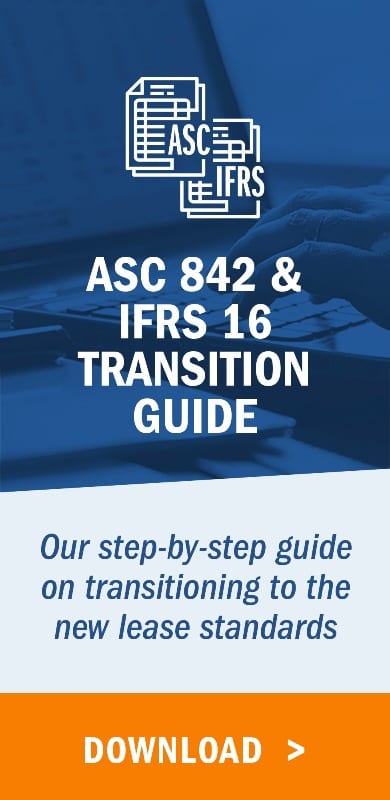The new lease accounting standards are coming whether you’re ready for them or not. Preparing to adopt GASB 87 and ASC 842 is a formidable endeavor. While many public companies have already undergone the process, private companies are still in the midst of the transition and can look to early adopters for advice.
Although the adoption date may seem far away, starting early will save you and your organization a lot of time and stress in the long run. In this article, we break down the benefits of early adoption for GASB 87 and ASC 842.
The effective dates for each standard
Before learning the benefits of early adoption, you need to be aware of all of the effective dates for each standard. Although adoption of the standards for nonpublic entities and governments was delayed as a result of the COVID-19 pandemic, updated deadlines are on the horizon:
- ASC 842 is effective for nonpublic entities for fiscal years beginning after December 15, 2021.
- GASB 87 is effective for fiscal years beginning after June 15, 2021.
The sooner you begin the adoption process, the more efficient it will be.
Transitioning takes longer than you think
As accounting experts continue to share their advice about implementation, the most common tip is to start now rather than later. The adoption process doesn’t just happen overnight. A lot more planning is involved than initially predicted, and the process can feel overwhelming if you aren’t adequately prepared.
Thoroughly check your data to find embedded leases
Thoroughly reviewing all your contracts to identify leases that may be embedded in them is the first step when collecting the proper data for adoption. Starting this process sooner gives you more time to uncover embedded leases within each contract, as the rule on accounting for them has changed under the new standards.
Previously, under legacy accounting guidance, service contracts containing embedded leases were often treated the same as those without. However, under the new rules, organizations must determine whether each service contract contains an embedded lease and record the lease liability and assets to avoid material misstatements. Therefore, it’s imperative you understand the new process and identify embedded leases correctly. Accurately navigating the new standards depends on it.
Find and correct errors
After combing through your data and locating embedded leases, you may discover you made mistakes applying the previous accounting rules. While ASC 842 offers the practical expedient of keeping the lease classification made under ASC 840, it does not allow for errors to be grandfathered. If an error was made under ASC 840 in determining lease classification, analyzing your lease data early gives you the time to correct the classification so you can apply the practical expedient of not having to re-examine lease classification under ASC 842.
Additionally, some lease accounting solutions offer legacy accounting functionality as well as the new standards. If you are lucky enough to obtain this type of software, early use will allow you to ensure compliance with the legacy accounting standards, receive automated and accurate transition entries, and then ensure compliance with the new lease standards. As previously stated, compliance with the prior standards will help mitigate your transition in many ways.
Taking your time with your transition can help sort out any errors from previous accounting standards to avoid problems in the future.
Come up with a plan
The adoption process requires meticulous planning. Each step will impact many departments within your organization, including accounting, legal, purchasing, real estate, IT, financial reporting, FP&A, treasury, and more. It’s important to come up with a plan before you start to ensure you are looping in the various functions at the right time rather than contributing to an already chaotic transition by having the project take on multiple directions at one time.
Planning will allow employees to educate themselves and prepare for new challenges, resulting in a more productive and satisfied team. Fewer people will be likely to quit as a result of being overwhelmed or overworked. Additionally, planning properly for the transition improves the overall efficiency throughout the company.
Benefits beyond leases
Implementing the new standards early has other benefits beyond accounting. As you move through the adoption process, you will be setting yourself up for future success. The new standards will provide you with insights into multiple areas of your business.
Mitigate future reporting burdens
Companies transitioning early see an improvement in budgeting and forecasting. After implementation, you can quickly build accurate lease budgets for future periods. The transparency of all lease data expedites being able to make various forecast predictions. New and improved insights help the company make more informed business decisions across multiple functions.
Being prepared for future standards
State and local governments have a new standard to adopt right after GASB 87. GASB 96 is effective for fiscal years beginning after June 15, 2022. This new standard will cover subscription-based IT arrangements and much like GASB 87, presents some new accounting treatments to IT contracts.
Under GASB 96 organizations will need to establish a subscription asset and subscription liability measured as the present value of the expected subscriptions payments over the term of the contract. This accounting treatment is similar to GASB 87 but entirely new for software contracts. With the expertise picked up while analyzing contracts for GASB 87, an organization could easily transition to reviewing contracts for GASB 96 or gain some efficiencies by reviewing contracts for both standards at the same time.
Pick the proper software solution
When choosing a lease accounting solution, you want to think beyond compliance. Lease accounting software makes the transition process easier and benefits your company into the future. Using specialized software to help with GASB 87 or ASC 842 makes the process more efficient, improves internal controls, and provides more visibility for reporting across the organization.
Excel can set you up for non-compliance
Relying on Excel for implementation may lead to errors resulting in non-compliance and other accounting issues in the future. While many use spreadsheets to collect their accounting data, they are not as reliable as a secure, cloud-based lease accounting solution when it comes to complying with the new standards. Assets and liabilities need to be accurately calculated from your lease data, and accounting software presents less risk and uses fewer resources during implementation.
Software helps you beyond compliance
Don’t get so focused on the transition that you forget to consider the future after compliance. Lease accounting software provides many benefits other than just compliance, including:
- Improved budgeting and forecasting
- Unmissed critical dates and important deadlines
- Better communication between departments
- More efficient audits
- Easier access to your lease data
- More efficient month-end close
As your organization implements the new standards, you should research lease accounting systems to help with reports in the future. The sooner you start your search, the sooner you can reap the benefits and comply with confidence.
Summary
As the effective dates for GASB 87 and ASC 842 move closer, it’s important to consider early adoption. The transition to the new standards will take longer than you think. Starting the adoption process now will save you the stress of making critical errors, scrambling to implement without a plan, and missing important data as you go. A reliable lease accounting software like LeaseQuery will make the adoption process run more efficiently and accurately, facilitating confident compliance and financial benefits for your organization.




